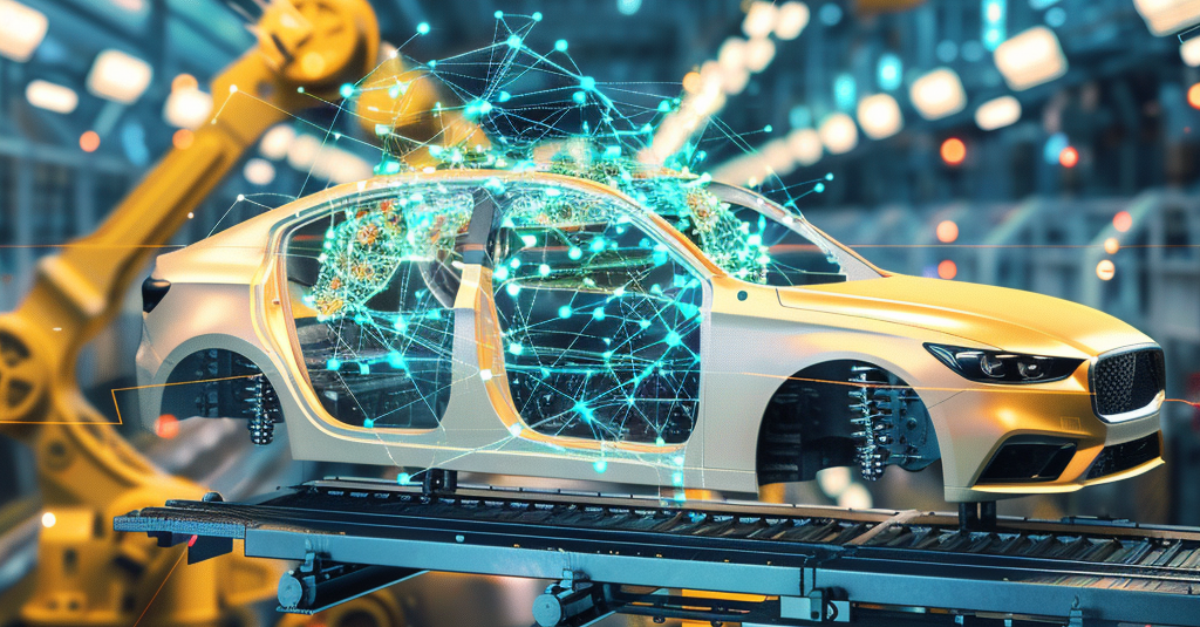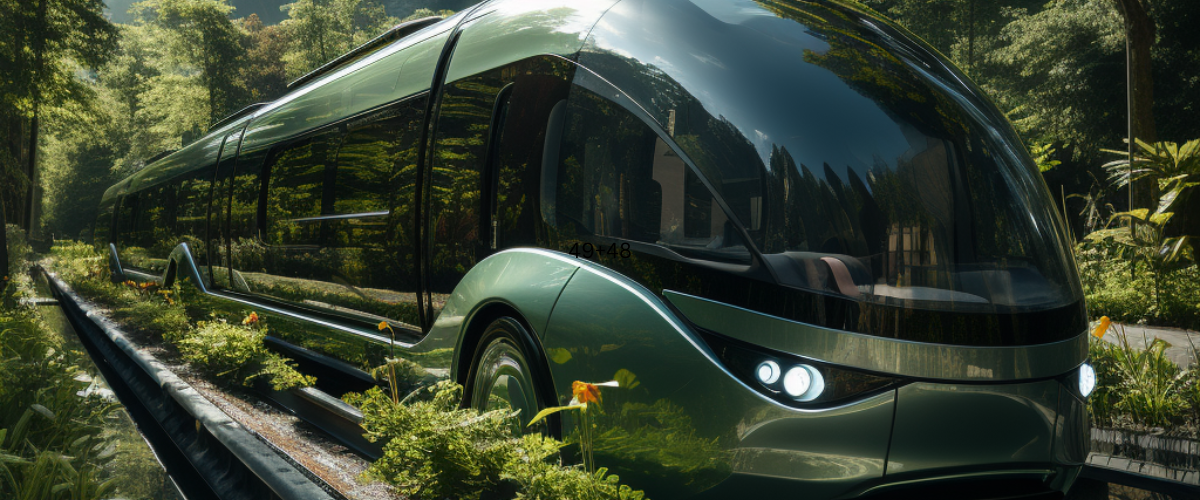How Hydrogen-Powered Vehicles are creating Green Transportation Solution?
In a swiftly evolving world marked by technological strides and an urgent call for sustainable solutions, an extraordinary convergence is profoundly reshaping the very fabric of transportation. Envision vehicles gliding silently along urban streets and highways, propelled by an abundant element, emitting naught but pure water vapour—a vision that bridges the realms of science fiction and reality. This realm is that of hydrogen-powered autonomous vehicles (HAVs), an innovative fusion where cutting-edge technology, digital transformation, and an unwavering commitment to sustainability converge seamlessly. The potential impact is underscored by a study from the National Renewable Energy Laboratory, revealing that HAVs could slash greenhouse gas emissions by an astounding 80% in comparison to conventional vehicles.
Consider this: the transportation sector contributes to nearly a third of global carbon dioxide emissions, significantly contributing to the challenges of climate change. This staggering fact underscores the critical need for transformative alternatives that not only mitigate emissions but also redefine the essence of mobility itself. Hydrogen, the universe's most abundant element, stands not just as a clean energy source but a transformative catalyst for transportation. Supported by research from the University of California, Berkeley, which asserts that HAVs could potentially avert up to 90% of traffic accidents, the profound efficacy of hydrogen fuel cell technology comes to the fore. This technology exhibits conversion rates surpassing those of conventional internal combustion engines. When aligned with the capabilities of autonomous driving—driven by artificial intelligence and real-time data processing—a powerful symphony of innovation emerges, promising a future characterised by safer, more efficient, and genuinely sustainable mobility solutions.
But this revolution doesn't merely concern vehicles alone. The impact of this fusion of hydrogen automobiles extends far beyond mechanical components. The ongoing digital transformation sweeping across industries finds a significant avenue of revolution within the realm of transportation. Witness the emergence of vehicle-to-vehicle (V2V) and vehicle-to-infrastructure (V2I) communication networks, fashioning a road for a synchronised traffic ecosystem that mitigates congestion, heightens safety measures, and optimises travel routes. Furthermore, the indispensable cybersecurity protocols for this digital era not only ensure passenger safety but also preserve the integrity of the entire transportation network. In the forthcoming sections of this blog, we will meticulously unfold how this paradigm shift is anything but an evolution limited to transportation; it's a blueprint that is redefining mobility as a greener, smarter, and more interconnected reality on wheels.
1. The Emergence of Hydrogen-Powered Autonomous Vehicles: Redefining Mobility
As societies transition towards sustainable mobility transportation, the emergence of hydrogen-powered autonomous vehicles has captured the imagination of both visionaries and environmental advocates. This convergence of cutting-edge technology promises to redefine the very fabric of mobility for several reasons:
a) Hydrogen Fuel Cell Technology: A Sustainable Propulsion
At the heart of this transformation lies hydrogen fuel cell vehicle technology, a remarkable engineering feat that could redefine energy consumption in the automotive sector. Through a process that elegantly combines hydrogen gas and electrochemical reactions, fuel cells generate electricity while emitting only pure water vapour—a departure from traditional fossil fuel emissions.
The advantages of hydrogen as a fuel source are multifaceted:
- Clean Energy: Hydrogen fuel produces zero tailpipe emissions, positioning it as a critical player in curbing air pollutants and greenhouse gases that endanger the environment.
- Abundant Resource: Hydrogen is among the most abundant elements on Earth, providing a sustainable alternative to finite fossil fuels.
- Quick Refuelling: Hydrogen refuelling is impressively fast, akin to the time it takes to refuel a conventional gasoline vehicle, aligning seamlessly with the requirements of autonomous fleets.
b) Autonomous Driving Technology: A Paradigm Shift in Mobility
Autonomous driving technology has transcended the boundaries of science fiction, heralding an array of potential benefits that can redefine roadways and our travel experiences.
The potential benefits of driving autonomous vehicle technology are diverse:
- Enhanced Safety: Self-driving vehicles can substantially diminish accidents caused by human error by using advanced sensors and algorithms to anticipate and respond to potential hazards more effectively.
- Reduced Traffic Congestion: Autonomous vehicles can communicate and adjust their speeds with each other, leading to smoother traffic flow and decreased congestion.
- Greater Accessibility: Self-driving cars extend newfound mobility to individuals with disabilities or those who are unable to drive, promoting inclusivity in transportation.
2. The Synergy of Hydrogen and Autonomy: Propelling Efficiency and Continuity
The harmonious marriage of hydrogen fuel cell technology and autonomous driving capabilities yields a synergy that redefines efficiency and operational continuity in the realm of transportation.
a) Energy Efficiency: Leveraging Hydrogen for Extended Autonomy
The remarkable energy efficiency of hydrogen-powered vehicles is at the core of their capability. These vehicles convert a substantial amount of energy from hydrogen gas into electricity, surpassing the capacities of traditional internal combustion engines. This efficiency translates to an impressive driving range that far exceeds that of battery electric vehicles. With longer ranges on a single tank, hydrogen-powered autonomous vehicles can journey farther before needing to refuel.
b) Rapid Refuelling: Catalysing Efficiency through Swift Hydrogen Refuelling
One of the most compelling attributes of hydrogen-powered vehicles lies in their rapid refuelling process. Unlike battery electric vehicles that require time-consuming recharging, hydrogen vehicles can be refuelled in a matter of minutes, akin to the refuelling experience of conventional gasoline vehicles. This rapid refuelling capability is not merely convenient; it's a game-changer, particularly considering the demands of autonomous fleets that strive for minimal downtime and maximal efficiency.
3. Digital Transformation in Hydrogen-Powered Autonomous Vehicles: Pioneering a New Era of Mobility
The potent amalgamation of hydrogen fuel cells, autonomous driving, and digital transformation adds another dimension to the future of global mobility, featuring connectivity, artificial intelligence, and data security.
a) Connectivity and Communication: Crafting a Network of Intelligence
In the age of digital connectivity, the realm of transportation takes on a new dimension. Hydrogen-powered autonomous vehicles do not operate in isolation; they form an interconnected network that exchanges real-time data with other vehicles, infrastructure, and central control systems. This digital dialogue ushers in opportunities ranging from optimising traffic flow to enhancing safety measures.
b) AI and Machine Learning: Empowering Informed Autonomy
The autonomy of self-driving vehicles is fueled by artificial intelligence (AI) and machine learning, which interpret intricate data from sensors, cameras, and other sources in real time. These technologies enable vehicles to make informed decisions prioritising safety, efficiency, and adaptability.
c) Data Security and Privacy: Safeguarding the Digital Frontier
While digital transformation brings substantial benefits, it also raises concerns about data security and privacy. As vehicles exchange sensitive information and interact with external networks, the risk of unauthorised access and data breaches becomes a pressing issue. Implementing robust cybersecurity measures is essential to protect sensitive information and ensure the autonomous operations of hydrogen-powered vehicles remain secure.
4. Sustainability at the Core: Forging a Greener Tomorrow
In the pursuit of sustainability, hydrogen-powered autonomous vehicles stand as a beacon of hope. Within this convergence, the principles of zero emissions and renewable energy production take centre stage, envisioning a transportation ecosystem with a reduced carbon footprint and a commitment to ecological responsibility.
a) Zero Emissions: Unleashing the Potential of Hydrogen
Hydrogen-powered vehicles wield the power of zero emissions, emitting only water vapour as they traverse urban landscapes and beyond. This transformation from tailpipe pollutants to pure water vapour reduces greenhouse gases and harmful air pollutants that degrade air quality and contribute to climate change.
b) Renewable Hydrogen Production: Envisioning Sustainable Energy
The green hydrogen production process through renewable methods, such as solar or wind-powered electrolysis, is central to sustainable transportation. The shift from finite resources to renewable sources underscores a commitment to ecological balance.
5. Overcoming Challenges and Future Prospects: Forging a Promising Path
The path to hydrogen-powered autonomous vehicles is not free of challenges, yet these obstacles serve as stepping stones towards a brighter future. Addressing infrastructure gaps, cost considerations, and regulatory intricacies is integral to propelling the evolution of transportation.
a) Infrastructure Development: Fueling the Future
Creating a comprehensive hydrogen refuelling infrastructure is fundamental to realising hydrogen-powered autonomous vehicles' potential. Collaborative efforts are underway to lay the foundation for a refuelling network spanning cities and nations.
b) Cost Considerations: Toward Economic Viability
Economies of scale and technological advancements are poised to drive down the costs associated with hydrogen fuel cell vehicle technology and autonomous systems. These advancements will make these technologies more accessible over time.
c) Regulatory Landscape: Navigating Safely
Balancing innovation and public safety requires a regulatory landscape that keeps pace with advancements. Responsible regulation ensures the potential of these vehicles is harnessed ethically and safely.
Final Verdict - Pioneering a Sustainable and Intelligent Mobility Landscape
The fusion of hydrogen-powered autonomous vehicles, digital transformation, and sustainability ushers in a new era of transportation. By combining advanced technologies, environmental consciousness, and innovative solutions, the future holds the promise of efficient and ecologically responsible mobility. As these vehicles redefine the roads we traverse, they simultaneously redefine our commitment to creating a sustainable and intelligent transportation landscape. As we embrace this harmonious combination, we set forth on a path toward a future where transportation seamlessly aligns with our environment. This journey promotes a legacy of responsibility and innovation, akin to how Global Lancers seamlessly integrates digital transformation into businesses. This integration enhances efficiency, fosters seamlessness, and modernises organisational operations for more effective outcomes.
Recent Posts








Add Comment
0 Comments